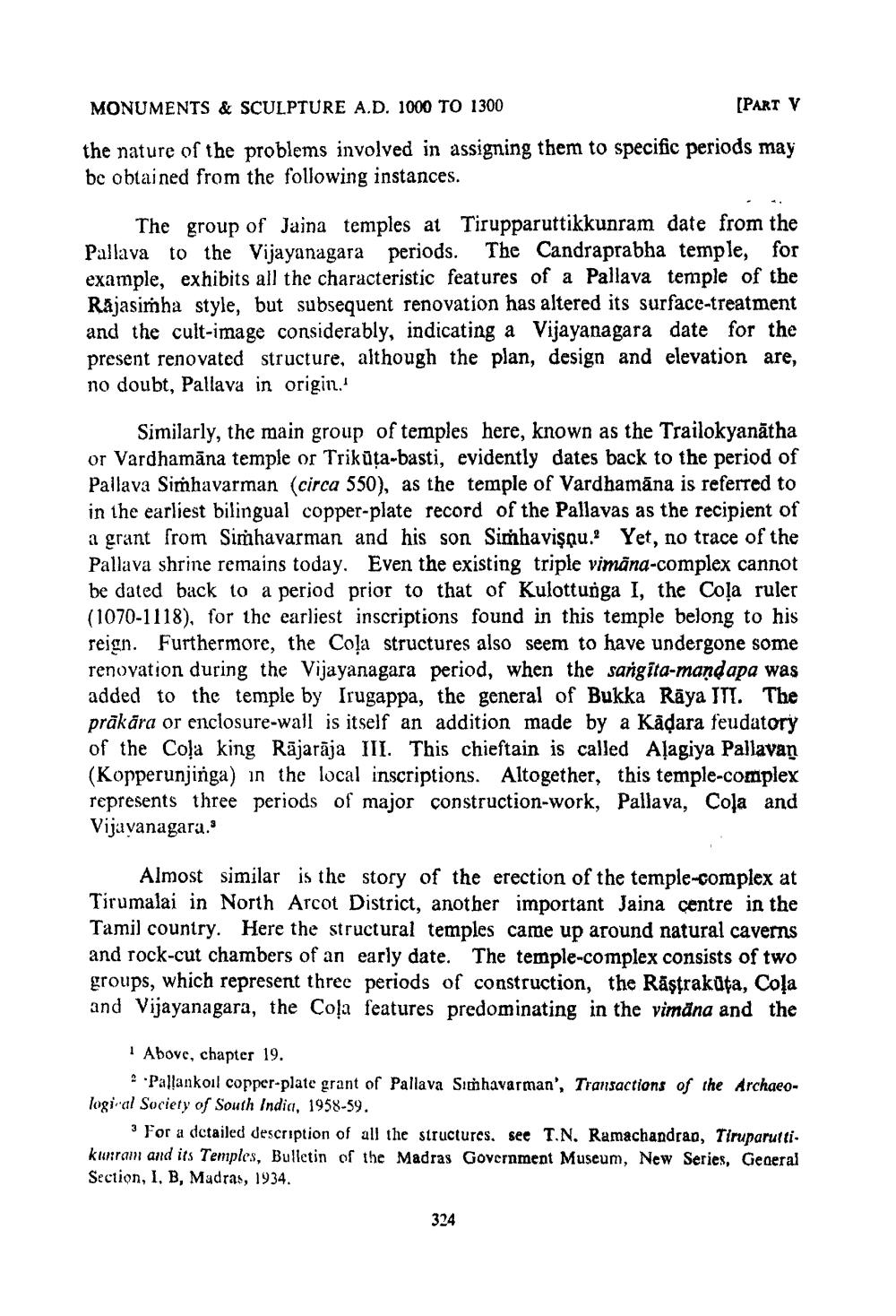________________
MONUMENTS & SCULPTURE A.D. 1000 TO 1300
[PART V
the nature of the problems involved in assigning them to specific periods may be obtained from the following instances.
The group of Jaina temples at Tirupparuttikkunram date from the Pallava to the Vijayanagara periods. The Candraprabha temple, for example, exhibits all the characteristic features of a Pallava temple of the Rajasimha style, but subsequent renovation has altered its surface-treatment and the cult-image considerably, indicating a Vijayanagara date for the present renovated structure, although the plan, design and elevation are, no doubt, Pallava in origin.
Similarly, the main group of temples here, known as the Trailokyanātha or Vardhamāna temple or Trikūța-basti, evidently dates back to the period of Pallava Simhavarman (circa 550), as the temple of Vardhamāna is referred to in the earliest bilingual copper-plate record of the Pallavas as the recipient of a grant from Simhavarman and his son Simhavişnu. Yet, no trace of the Pallava shrine remains today. Even the existing triple vimāna-complex cannot be dated back to a period prior to that of Kulottunga I, the Coļa ruler (1070-1118), for the earliest inscriptions found in this temple belong to his reign. Furthermore, the Coļa structures also seem to have undergone some renovation during the Vijayanagara period, when the sangita-mand apa was added to the temple by Irugappa, the general of Bukka Rāya ITI. The prākāra or enclosure-wall is itself an addition made by a Kādara feudatory of the Cola king Rājarāja III. This chieftain is called Alagiya Pallavan (Kopperunjinga) in the local inscriptions. Altogether, this temple-complex represents three periods of major construction work, Pallava, Cola and Vijavanagara.
Almost similar is the story of the erection of the temple-complex at Tirumalai in North Arcot District, another important Jaina centre in the Tamil country. Here the structural temples came up around natural caverns and rock-cut chambers of an early date. The temple-complex consists of two groups, which represent three periods of construction, the Rästrakūta, Coļa and Vijayanagara, the Coļa features predominating in the vimāna and the
| Above, chapter 19.
Pallankoil copper-plate grant of Pallava Simhavarman', Transactions of the Archaeologi al Society of South India, 1958-59.
For a detailed description of all the structures. see T.N. Ramachandran, Tiruparuttikurram and its Temples, Bulletin of the Madras Government Museum, New Series, General Section, I. B, Madras, 1934.
324




